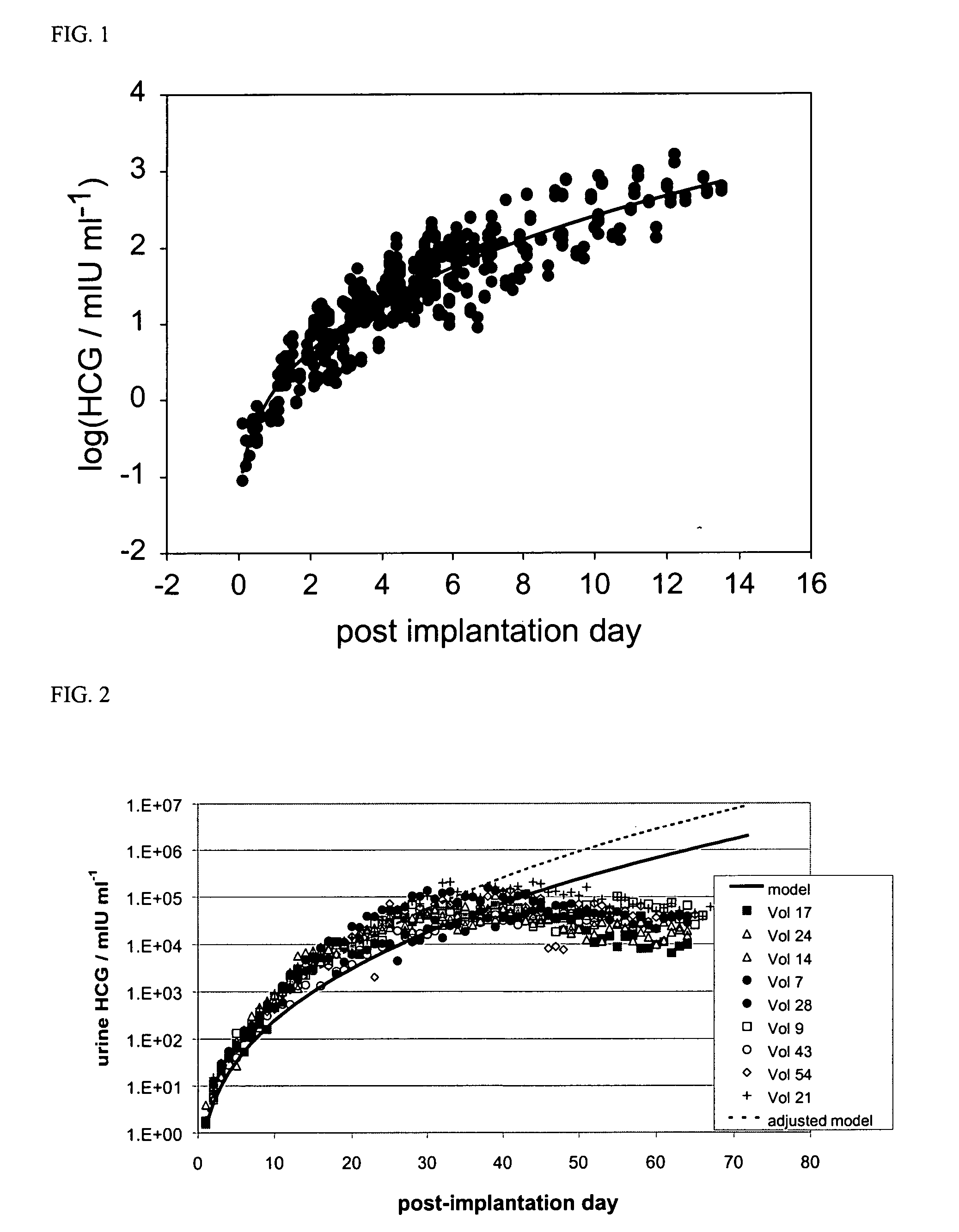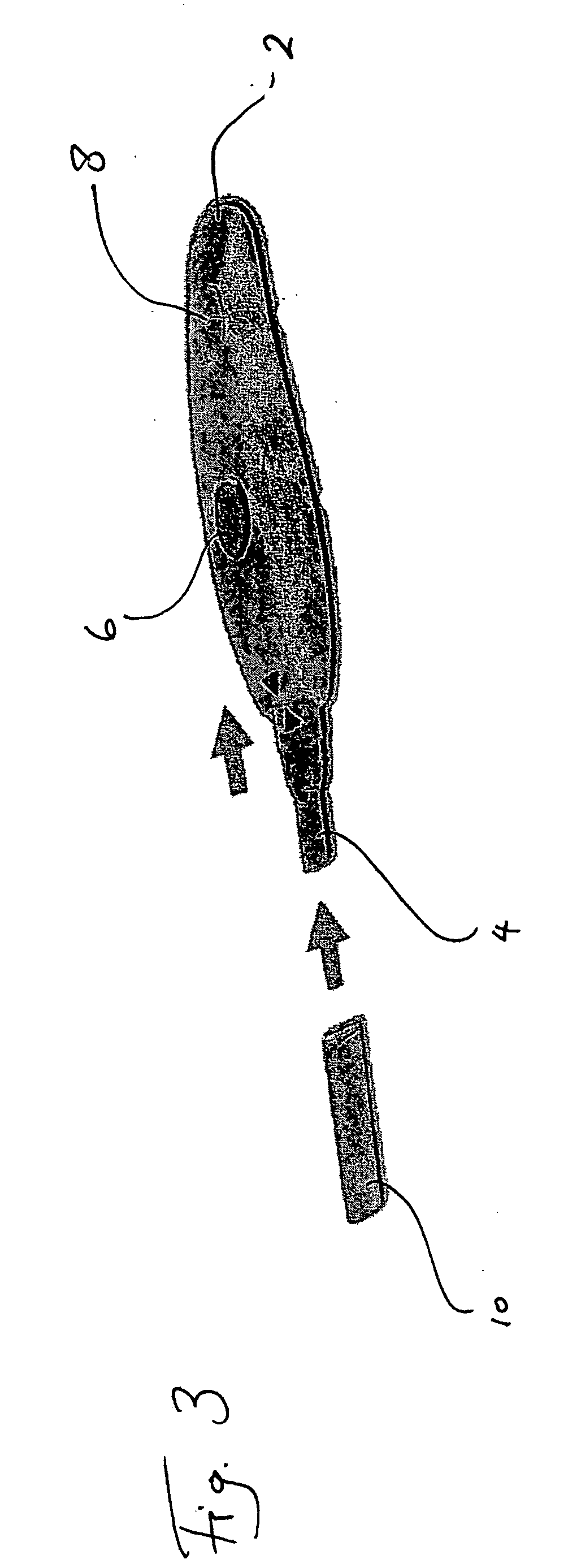Determining the estimated date of embryo implantation and related dates
- Summary
- Abstract
- Description
- Claims
- Application Information
AI Technical Summary
Problems solved by technology
Method used
Image
Examples
example 1
[0045] As part of a larger study into the changes in concentration of various hormones during the female reproductive cycle, samples were gathered from a group of women volunteers. Early morning urine samples were collected on a daily basis, and these were analyzed, using standard immunological assay techniques, to obtain values for the concentration of a number of analytes, including urinary hCG, LH, follicle stimulating hormone (FSH) etc.
[0046] Subsequent analysis of the data showed that, in those women who became pregnant during the course of the study, the urinary concentration of hCG increased rapidly, as expected. Surprisingly, however, the inventor discovered that the graphs of hormone concentration vs time could be shifted on the time axis so as to almost superimpose. Namely, the progression of hCG increase between different individuals did not alter greatly and the difference between different individuals being to a significant extent due to the differences in the time at ...
example 2
[0048] From the data, the inventor was able to derive a number of algorithms which could be used to estimate the day of implantation based on measured hCG concentration values. Using the data illustrated in FIG. 1, the following equation was derived:
log h=a(t−t0)033−1.86 (equation 1)
where h is the concentration of hCG in the sample expressed in mIU / ml, t-t0 is the number of days between the date of measurement and the implantation date, and a is a coefficient (in this instance 1.99).
[0049] From the data illustrated in FIG. 2, which were obtained using a slightly different hCG assay technique, the value of a was found to be 2.15. The value of the parameter a has a value that is characteristic of the assay system being used and typically depends on the particular detection technique used (such as a particular antibody) and / or the particular form of hCG being detected. Thus, the selected system should be calibrated against known standards (such as samples obtained from pregnant fe...
example 3
[0052] A cause of uncertainty in the calculation of the date of implantation is that the value of the parameter ‘a’ varies from person to person (although by less than might have been predicted prior to the present disclosure). Another cause of uncertainty is that the urinary hCG concentration fluctuates randomly about the mean value throughout any given day. The inventor investigated whether these causes of uncertainty can be reduced by using a number of hCG concentration determinations (e.g. two measurements, taken 7 days apart).
[0053] Attempts to estimate parameters a and to by direct solution of equation (2) using two different values of log(hCG) obtained on two different days failed, because cubing the value (log(hCG)−1.86) amplified the errors. Small errors in the estimation of a, caused by small fluctuations in log(HCG), caused large errors in the estimate of to. The following method seemed to work satisfactorily, however.
[0054] From equation 1, the slope of the log(hCG)−ti...
PUM
 Login to View More
Login to View More Abstract
Description
Claims
Application Information
 Login to View More
Login to View More - R&D
- Intellectual Property
- Life Sciences
- Materials
- Tech Scout
- Unparalleled Data Quality
- Higher Quality Content
- 60% Fewer Hallucinations
Browse by: Latest US Patents, China's latest patents, Technical Efficacy Thesaurus, Application Domain, Technology Topic, Popular Technical Reports.
© 2025 PatSnap. All rights reserved.Legal|Privacy policy|Modern Slavery Act Transparency Statement|Sitemap|About US| Contact US: help@patsnap.com



